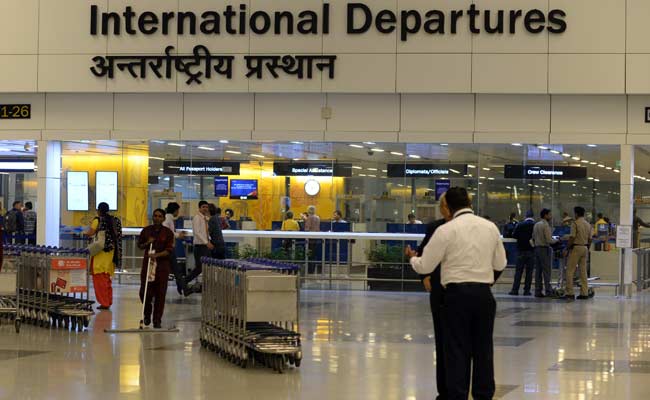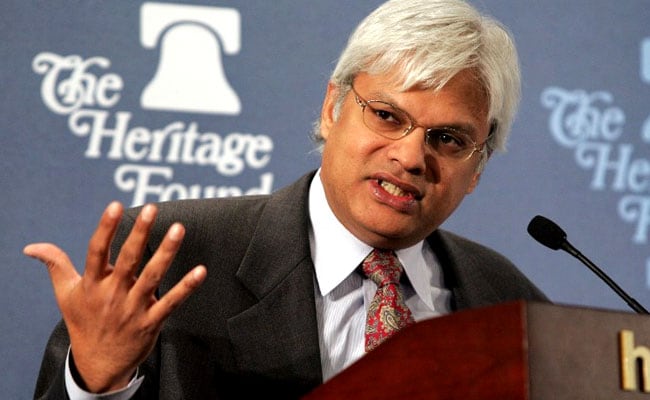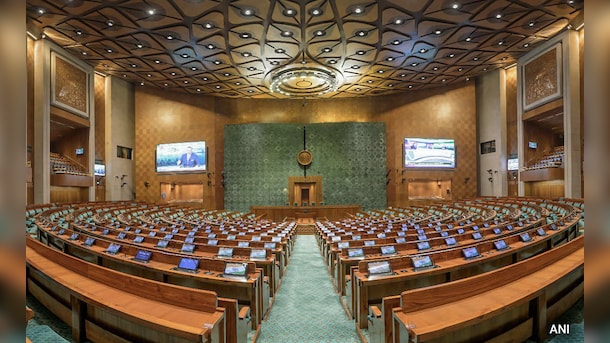Explained: 350 vs 1,100, CPCB vs IQAir, Who Has Got Delhi's AQI Right
Both CPCB and IQAir follow different methods of calculating air quality index, resulting in different numbers.

Delhi's sky turned grey and hazy a day after Diwali fireworks lit up the city. The air, toxic, making the national capital the "most polluted major global city". The pollution levels or the Air Quality Index (AQI) soared to severe levels, resulting in difficulty in breathing, itchy eyes and causing discomfort to even healthy people.
IQAir, a Swiss air-quality monitoring company, clocked the city's AQI at a staggering 1,121 on Tuesday. However, India's Central Pollution Control Board (CPCB) reported a much lower AQI of 351, falling under the "very poor" category. The catch is - both the readings are correct but for different reasons.
Also Read: 'Green' Crackers Failed. Delhi Suffers Worst Post-Diwali Air In 5 Years
What Is AQI?
The Air Quality Index (AQI) is a public health tool designed to communicate air pollution levels or the quality of air in simple terms. Eight pollutants namely particulate matter (PM) 10, PM2.5, Ozone (O3), Sulphur dioxide (SO2), nitrogen dioxide (NO2), carbon monoxide (CO), lead (Pb) and ammonia (NH3) act as major parameters in deriving the AQI of an area, as per the CPCB.

"AQI is a calculated index based on different parameters. It is for common man's understanding of the quality of air," explained Mohan George, Consultant at the Centre for Science and Environment. "AQI has different color-coded ranges simply to tell the citizens that air is good or satisfactory or very poor and what they should be doing," George, also former Additional Director at Delhi Pollution Control Committee, added.
For example, AQI between 401 and 500 or in the severe category is hazardous for even healthy people, and one should avoid going out or exercising in the open.
Also Read: Did Delhi's Green Diwali Work? Air Quality Data From Last Year Shows...
CPCB vs IQAir
Difference In Scale
India's AQI scale is capped at 500. Meaning, AQI beyond 500 will be grouped under the "severe" category, indicating a public health emergency.
The CPCB categorises AQI into six parts: 0-50 is considered 'good', 51-100 'satisfactory', 101-200 'moderate', 201-300 'poor', 301-400 'very poor', and between 401-500 'severe'.
IQAir on the other hand has tighter grouping: 0-50 is considered 'good', 51-100 'moderate', 101-150 'unhealthy for sensitive groups', 151-200 'unhealthy', 201-300 'very unhealthy', and anything above 301 is labelled hazardous.
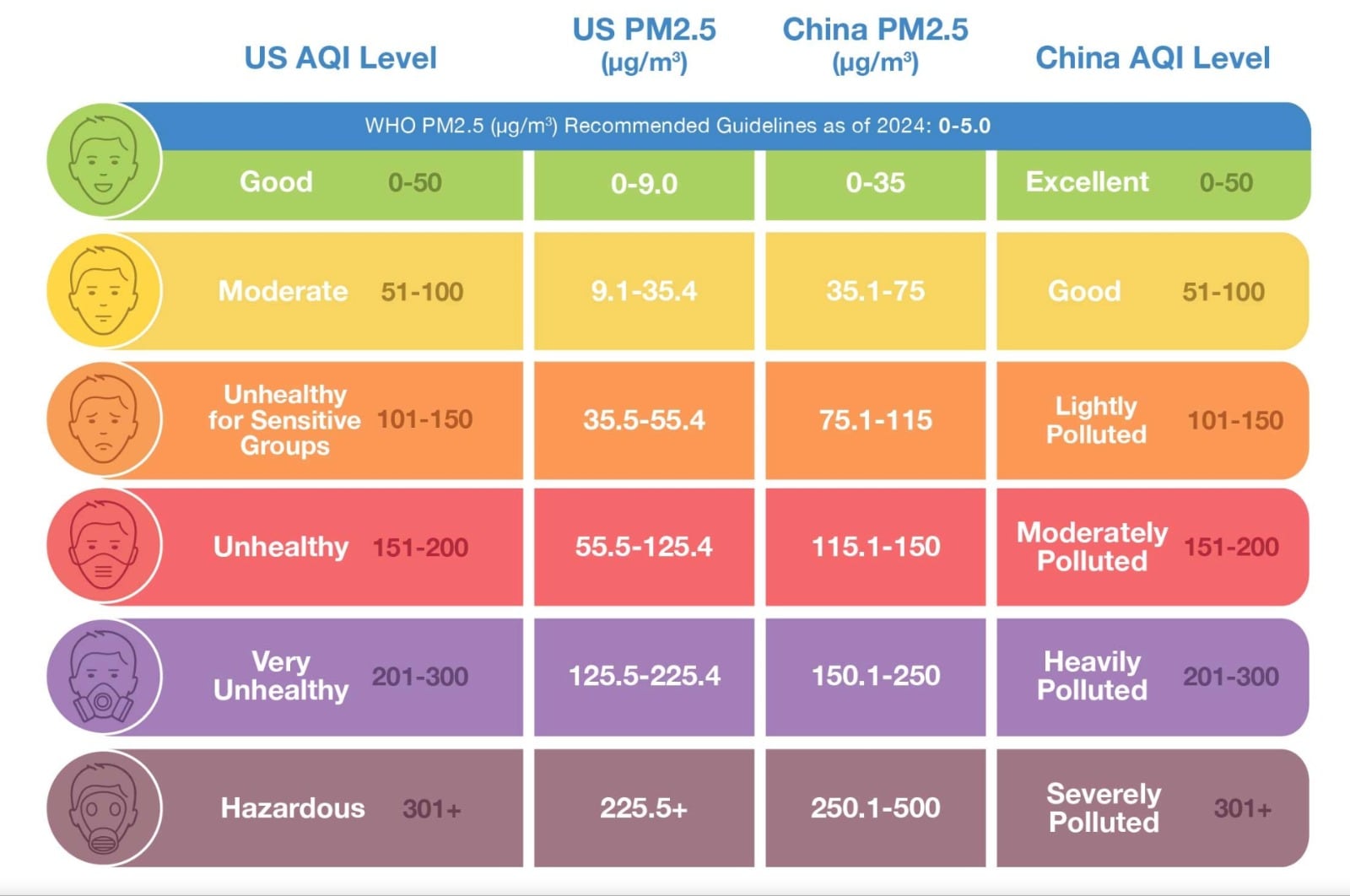
"When identifying AQI of a city or a station, both CPCB and IQAir, look at the dominating pollutant. For Northern India, it is generally particulate matter, and in winters, you would find PM 2.5, ultra-fine particulate matter to be the key pollutant," said George.
Data Sources
CPCB sources data from government-owned air quality monitoring stations including those operated by CPCB, DPCC, India Meteorological Department (IMD) and Indian Institute of Tropical Meteorology (IITM).
"CPCB relies on reference-grade monitors which provide calibrated data," said Geoge.
IQAir gets data from all the government sources and other sensor-based analysers installed by varied companies and even individuals.
"The US Embassy, for instance, has an air quality monitoring station installed. Similarly, other embassies and individuals have such analysers installed. IQAir takes average of all of these stations," said Sunil Dahiya, Founder and Lead Analyst at Envirocatalysts.
Also Read: 'Supreme Court Chose Right To Burn Crackers Over Right To Live': Amitabh Kant
Calculation
Both CPCB and IQAir follow different methods of calculating AQI. NDTV tried the two calculators and found vast difference in the AQI reading.
Let us assume PM2.5 concentration in an area is 1,100 micrograms per cubic meter. As per the IQAir calculator, AQI of that area will be 2,043. But, CPCB calculator will reflect AQI at 1,054. However, CPCB's final AQI will be under 500.
Whom To Trust?
George suggests looking at labels like "severe" or "hazardous" or the concentration of pollutant and accordingly taking health measures.
For instance, at 11:30 am today, IQAir recorded air quality near Mandir Marg in Delhi at 489 with PM2.5 being the major pollutant. PM2.5 concentration was recorded at 320 micrograms per cubic meter.

At 11 am, CPCB recorded PM2.5 concentration at 335 micrograms per cubic meter.
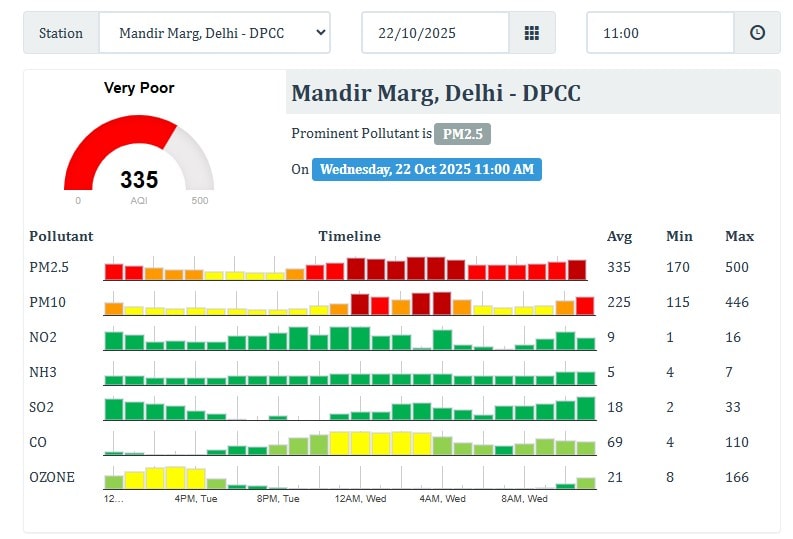
Therefore, look at concentrations or simply the label "very poor" or "severe".
IQAir or CPCB, the bottom line is that Delhi's air is polluted.
-
Opinion | Indians Are Growing Sick Of Customs Harassment - But Who Cares?
You would think that the Wintrack experience would serve as an example to customs officials and make them more careful and professional when dealing with citizens. In fact, the opposite is true.
-
Opinion | What Ashley Tellis 'Spying' Allegation Should Tell India About Chinese 'Influence Ops'
Two separate cases underscore one of the most serious challenges that open democracies are facing today in managing Chinese aggressive tactics when it comes to influence operations.
-
Opinion | Who Moved My Tech?
The business of technology has rewired the very logic of market behaviour, rewarding first movers and creation of dependencies more than even revenue and returns.
-
As India Sticks To Death By Hanging, A Look At Execution Methods Across The World
Close to three-quarters of the world, including almost all developed countries, have abolished capital punishment either in law or in practice, but 55 nations still retain and implement the death penalty.
-
Opinion | The Story Of RSS And Left: Why One Flourished, And Other Perished
Between Jyoti Basu's lost opportunity and Vajpayee's brief triumph lies the story of modern India - of one movement that adapted its faith to politics, and another that failed to adapt its politics to faith.
-
Opinion | US-China Trade War Has Turned Into A Full-Blown Siege, And India Is Stuck
Beijing's export controls, timed before diplomacy, reveal insecurity more than strength. By weaponising minerals, China has reminded the world why diversification is destiny.
-
Opinion | If Political Parties Fear POSH, The Problem Really Is Something Else
If women in India cannot be safe within the organisations that send them to Parliament and assemblies, the promise of democracy becomes hollow.
-
Opinion | Trump's Gaza Plan: Ushering "Peace for Our Time" In West Asia?
The long-elusive ceasefire is only the opening overture of a fiendishly complicated serial act. Seasoned observers of the region advise taking it with a ladleful of salt.
-
Opinion | The Northeasterner: Indian, Until Someone Needs A Punchline - By Vir Sanghvi
The racism we casually throw at those from the North East is not so different - or any less offensive - from the racism that Indians face in the West. Yet, we remain blind to it.
-
Opinion | The 'Real' Message To Trump And Pak In Taliban Minister's India Visit
To Trump, Taliban has made it clear that it is in no mood to rekindle American presence in Afghanistan. And to Pakistan, it seems to be signalling a newfound independence in its policies and activities.
-
News Updates
-
Featured
-
More Links
-
Follow Us On
